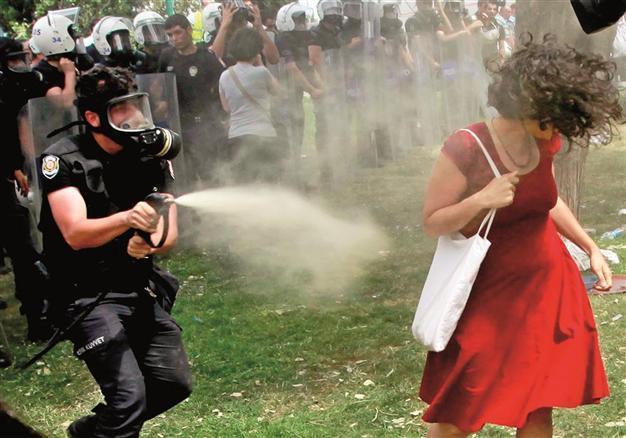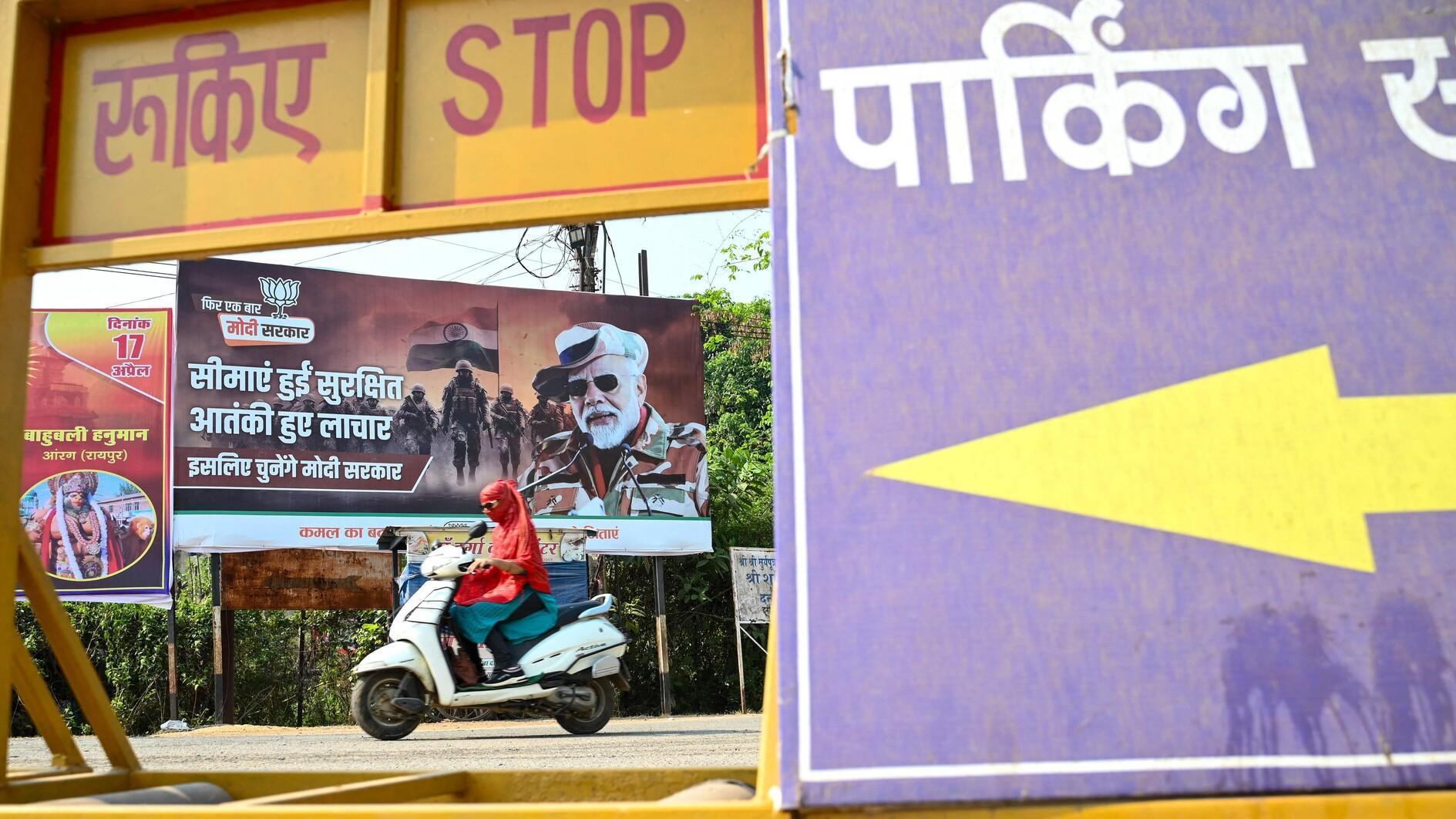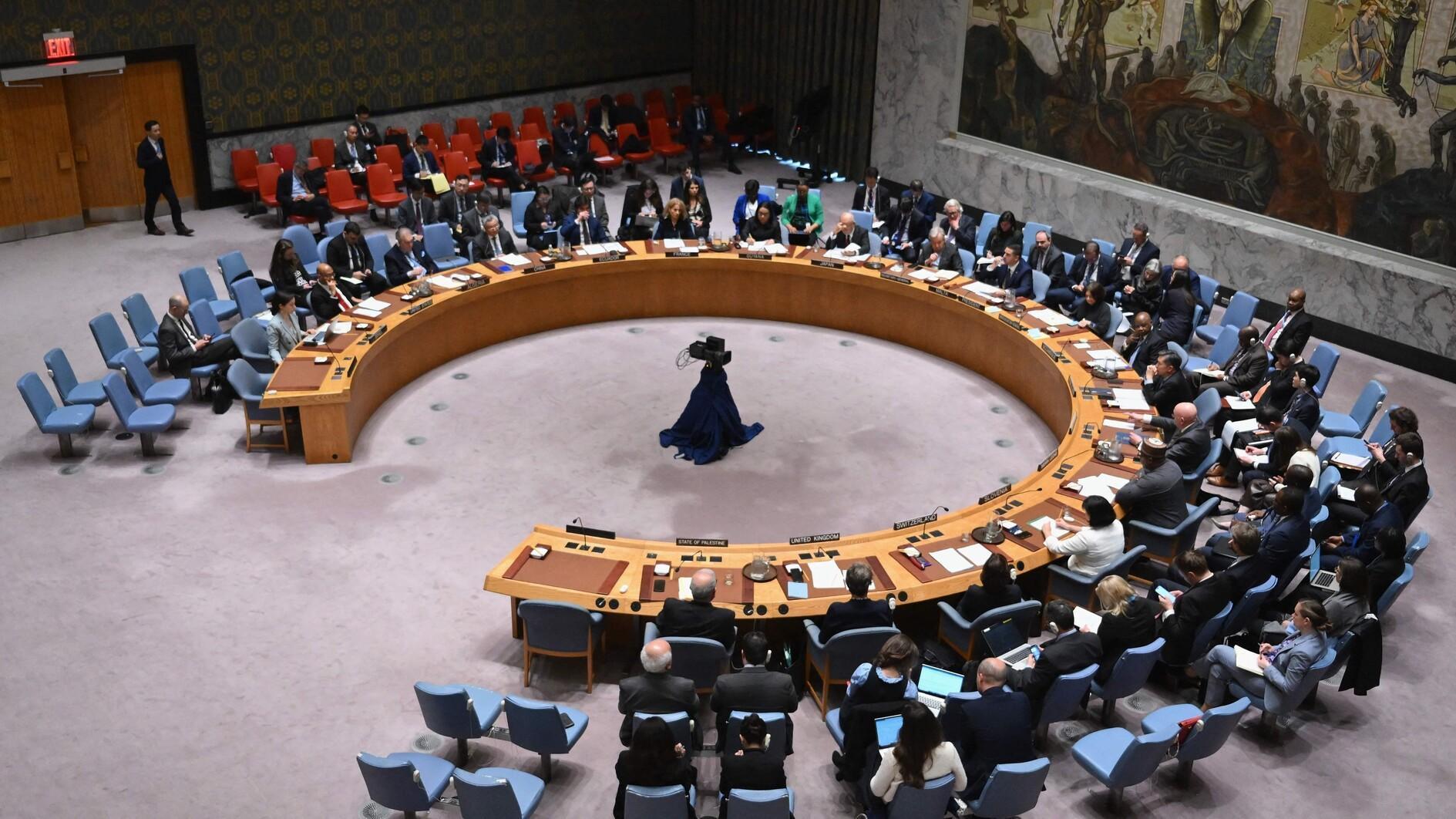It’s not easy being a woman in protest
Emrah GÜLER

The photo of the woman in red deserves its place as the ultimate iconic image of the protests in Turkey. AFP photo
Following the biggest police riot on June 15 in Istanbul’s Gezi Park, that destroyed the free zone that had become the symbol of freedom and democracy in Turkey for more than two weeks, the resistance unanimously shifted towards a display of more peaceful and pacifist set of protests. Young people filled the parks across Turkey, creating forums reminiscent of ancient Greece, where ideas for the future course of the resistance flowed freely.Another pacifist protest came on the evening of June 17, when a man left his backpack on the ground and began standing in the center of Taksim Square. He was quickly dubbed #duranadam or #standingman in social media. Others followed the standing man’s move (or lack of it), some standing close to him, others in other cities. Standing had become a form of protest, confusing the Justice and Development Party (AKP)-led government and the police.
Creativity and humor had always been at the heart of the protests since its first day, a renaissance of sorts. It was no surprise for many to see other pacifist protests emerge, some inspiring other protesters, others traveling to the bowels of social media after a few tweets or pictures. One of the latter was the bikini woman, a woman in only her bikini and sneakers, dancing in Taksim Square on June 20, shouting words of freedom, some coherent, others not so much.
A quick look at the comments below the news of the bikini woman in the Hürriyet Daily News (as well as the hundreds of tweets after the protest found its way to YouTube) shows once again how women are continuously and systematically forced to confine themselves to roles deemed right for them.
“Just as awful as a black burqa,” wrote one reader (presumably male from his online name.) “There is a happy medium between these two extremes. She can wear a bikini at the beach, not at the venue of a historical political demonstration.” “Happy medium” here says it all. The message is clear: Women shouldn’t be oppressed with burqas, but they should not be as out of control as wearing a bikini in a public space.
A symbol of women
Just days ago, the picture of a naked man circulated on social media. His arms raised in defiance against the riot police, his buttocks in full exposure. Twitter went aflame with jokes and amused messages. None of them, to my knowledge, talked about a “happy medium” for men.
Arguably the most iconic image of the Gezi Park protests is of a woman. The image of the woman in the red dress, her white bag slung over her shoulder, averting her eyes from the tear gas sprayed by a masked policeman, will forever be embedded in our collective conscience. The image deserves its rightful place as one of the leading symbols of the protests. Because, from its very first days, women have taken their place at the forefront in the protests. Half of the protesters have been women.
Is that surprising? Not really. When freedoms and democracy are at stake, it’s doubly so for women. Prime Minister Recep Tayyip Erdoğan and the AKP government have not been shy of coercing women to be obedient, pious housewives. Among the tens of frustrations that have led tens of thousands of people to streets have been unabashed attempts to control women’s bodies and open the way for further oppression.
Erdoğan has repeatedly encouraged and blatantly asked women to have three children, his attempts to pass restrictions on abortion were a major topic in one of his speeches in the midst of the protests.
Violence against women has multiplied during the AKP government, with a Cabinet boasting all men but one. Ironically, it was Erdoğan who had promised a lift on banning women from wearing headscarves at universities and government agencies. So it was no surprise to hear him talk about his “headscarved sisters,” who were apparently harassed by the protesters, during many of his speeches since the escalation of the protests.
While the pictures emerging from Gezi Park, and other cities where there were protests, showed pictures of many proud young women with headscarves, the rumor mill in social media hinted at harassments aimed at headscarved women, one especially chilling. Once again, women were at the forefront to pay a price when many blamed the woman for fabricating the story, disregarding a woman’s right to privacy in the face of harassment. Women writers and bloggers came to her rescue, urging some of the protesters not to further harass a woman just to back their ideologies. Fighting for freedoms seems to be harder for women, whether headscarved or in bikini.
















